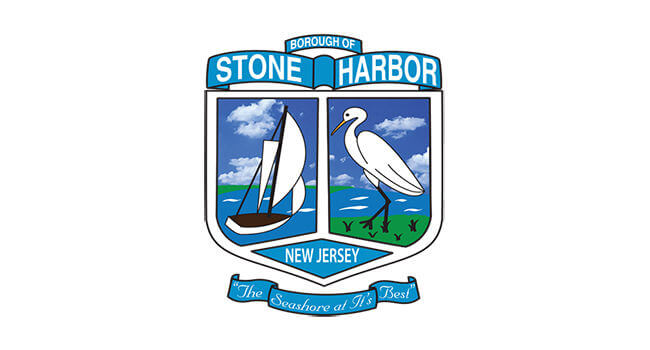STONE HARBOR – Stone Harbor Council held a special meeting March 22, at which Public Works Director and Interim Administrator Manny Parada provided the public with details on a flood mitigation pilot project that’s about to be implemented in the borough.
The pilot project is the result of several months of work by a task force that looked at cost effective ways of addressing flooding after the abandonment of an above ground pump station and drainage design at 93rd Street proved too costly for implementation.
In July 2022, the borough moved away from a long-standing plan to create a pump station and drainage area, the cost of which had escalated to over $11 million and continued its surging price spiral. Parada, an engineer by training, and borough engineer Marc DeBlasio worked with a cross section of elected and appointed officials, along with a representative group of residents to develop a new concept that will be tested in the pilot.
The new concept is built around the use of valves that, when closed, will prevent bay water from backing into the borough’s streets through piping designed to facilitate outflow.
By closing off the pipes during high water events in the bay and making use of newly constructed elevated bulkheads, the pilot will test a potentially cost-effective concept for closing the island community from bay water flooding.
Parada warned that with this method, the borough becomes a closed “bowl,” which will retain water from simultaneous rain events since the rainwater will have no outlet.
The danger is from a major rain event that occurs with high water elevation in the bay. In those circumstances, rainwater would be trapped until bay elevation is low enough to allow the valves to open and drain the rain water.
The streets involved in the pilot are 93rd, 94th and 95th streets, with the incidental inclusion of 92nd Street since it currently drains through 93rd.
Three different types of valves will be used to test the effectiveness of each in the concept design. The cost of the valves ranges from $41,000 to $11,000 each, allowing for eventual cost options based on performance.
Parada also warned that the valves will be tested in terms of their ability to stand up to the corrosive impact of saltwater.
“None of these valves were designed for a saltwater environment,” he said.
The expected cost of the pilot project is just over $350,000. If the pilot performs well, the use of the valves would be expanded to other streets that are prone to flooding.
An additional aid in the pilot study is a database of actual flood data and photos that Parada said should allow the borough to measure the impact of the flood reduction at various levels of bay water elevation.
The photographic evidence will be what Parada called an exercise in “citizen science,” where homeowners from the Stone Harbor Property Owners Association (SHPOA) will take pictures of flood events.
Parada was careful to emphasize that the pilot was not expected to produce dry streets 100% of the time.
“If you give me $250 million, I can give you a flood-free environment, but we don’t have $250 million,” he said.
The results of the pilot will have to be measured against cost. This was a theme he struck often during his presentation.
“What is an acceptable level of investment must be compared to what is an acceptable level of flooding,” he argued.
The pilot will be implemented with a fully manual management of the valves. Predicted bay elevations and projected rainfall will dictate public works staff going out to close the valves. If the pilot is deemed worth expansion, automating the valve opening and closing is contemplated.
When asked during public comment how long the duration of the pilot is expected to be, Parada said he did not know.
“It will depend on how much flooding we get,” he said.
He said he felt a one-year cycle would probably be sufficient, but the ultimate timeframe is dictated by having a sufficient number of flood events to test the concept.
A hot topic in the borough now is the Federal Emergency Management Agency (FEMA) Community Rating System (CRS) score, which dictates a level of discount available to property owners for flood insurance.
Parada said this project would gain points toward a better CRS score, but he could not say exactly how FEMA would score it.
The presentation made clear that the pilot project does not mean there will be no need for pumps. Depending on the performance of the pilot, some use of underground pumps may still be necessary.
What seems likely is that a large superstructure pump station with massive drainage pipes is probably no longer in the borough’s future.
There is a video recording of the special meeting for those who were not able to attend. It is posted on the borough website.
Contact the author, Vince Conti, at vconti@cmcherald.com.
North Cape May – So let me try to get this straight. 1) Chanting death to Americans and other colleges are in chaos in our own Country is totally unacceptable. 2) Inflation. 3) Over 10 million illegals invasion. 4)…








